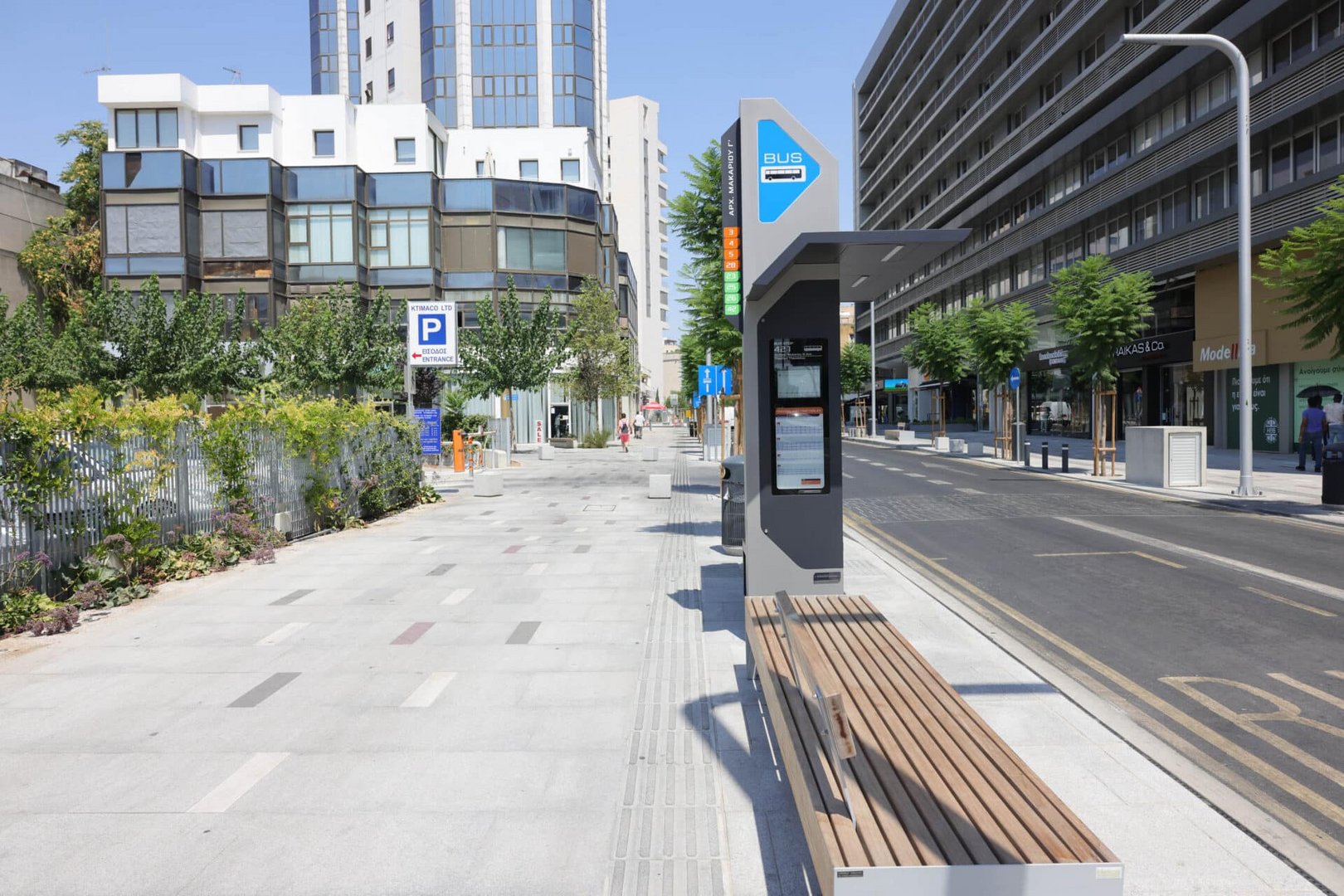The smart bus stops being installed across Cyprus are not the wrong way around, their designer Nikolas Demades said on Sunday.
“These stops are designed for Cyprus. The entire system is designed to satisfy Cyprus’ roads. They are not the wrong way round,” he told newspaper Politis.
He said that throughout the project, he was given instructions by the transport ministry to “keep a specific layout”, with the pillar containing information to be on the right-hand side of the stop as one looks at the road, “as a pointer for where the bus driver stops”.
“The front of the bus is to be level with the pillar. However, what makes people think they are the wrong way round is that the right side of the stop is missing, because we are used to the fact that the stop gives us protection from three sides,” he said.
On this matter, he said that if the “type C” stops, like those which have been placed on Nicosia’s central Makarios avenue, had been rolled out elsewhere, “things would be different”.
This, he said, is because the majority of stops which have been installed thus far are the smaller “type B” stops.
In fact, he said, “of the 1,000 stops which should have already been installed, only 180 have been installed thus far, and all of them are of the smaller ‘type B’ variety” outside of those on Makarios avenue.
“On the one hand, we installed the smallest stops from a series of ten types of stops which we designed, and on the other hand, they do not look that smart since they are not complete.”
“The electronic sign which is supposed to inform people about routes and other things is missing, the lighting and solar panels are missing, some are missing the bench, or we see benches with half a leg,” he said.
What would have provided better reactions among the populace, he said, would have been if a variety of different types of stop had been installed and it they had been installed complete, “so that the public would have had a correct image of the project and have within them a desire to use buses created”.
“What is happening today, this carelessness, saddens and disappoints me greatly, even as the project’s designer. It seems that the necessary attention and care were not taken in the implementation of this project by the construction company,” he said.
On Thursday, he had told the House transport committee that the fact that only one type of stop has been installed “creates confusion” as people believe that all stops will resemble those which have been installed thus far.
He went on to say that the designer was supposed to carry out checks on 10 samples of stops created by the manufacturer, but that he has only been able to check one sample to date.
On this matter, he said “aesthetic changes” to the designs have been made, and that as such, “we feel disconnected from the implementation, we want to be involved so the process is done correctly”.
He said that his firm had “reacted” to the changes, but that he had been informed that the contractor “is entitled to do it” within the framework of the tender.
He added that changes to the structure may negatively impact “the strength” of the structures, as well as the cost.
MPs called for Auditor-General Andreas Papaconstantinou to investigate the matter, while Akel MP Costas Costa had described the matter as a “huge scandal”, and later added that it is “a huge scandal worth tens of millions”.
Public works department chief engineer Aristotelis Savva defended the stops and in particular the pillar on Thursday, saying that the stops have been correctly installed, and that similar systems in the same orientation exist in London, Edinburgh and Manchester in the United Kingdom, as well as in cities in Spain and in Poland.
“The pillar goes where the bus should stop for people to board and the shelter follows. If the bench with the shelter came first, people would get off through the back door and into the shelter,” he said, with this eventuality meaning that people would be getting off buses and walking straight into the place where people would be waiting to get on.
“With the shelter the way it is, passengers’ exits are not obstructed, and protection is provided against collisions, and thus the feeling of safety is increased,” he said.
Transport Minister Alexis Vafeades had defended the stops himself last month, saying that the pillar “protects waiting passengers from possibly being hit by a car”, but did not rule out a redesign should it be demanded, saying the concept is being constantly developed.
“The stops will evolve; they will not stay as they are for ever. We want to develop them into a multi-use tool. In the future, we want to add free WiFi, there will be information about what is happening in the area, free drinking water. We want to evolve them into a hub, a space which will provide services to people,” he said.







Click here to change your cookie preferences